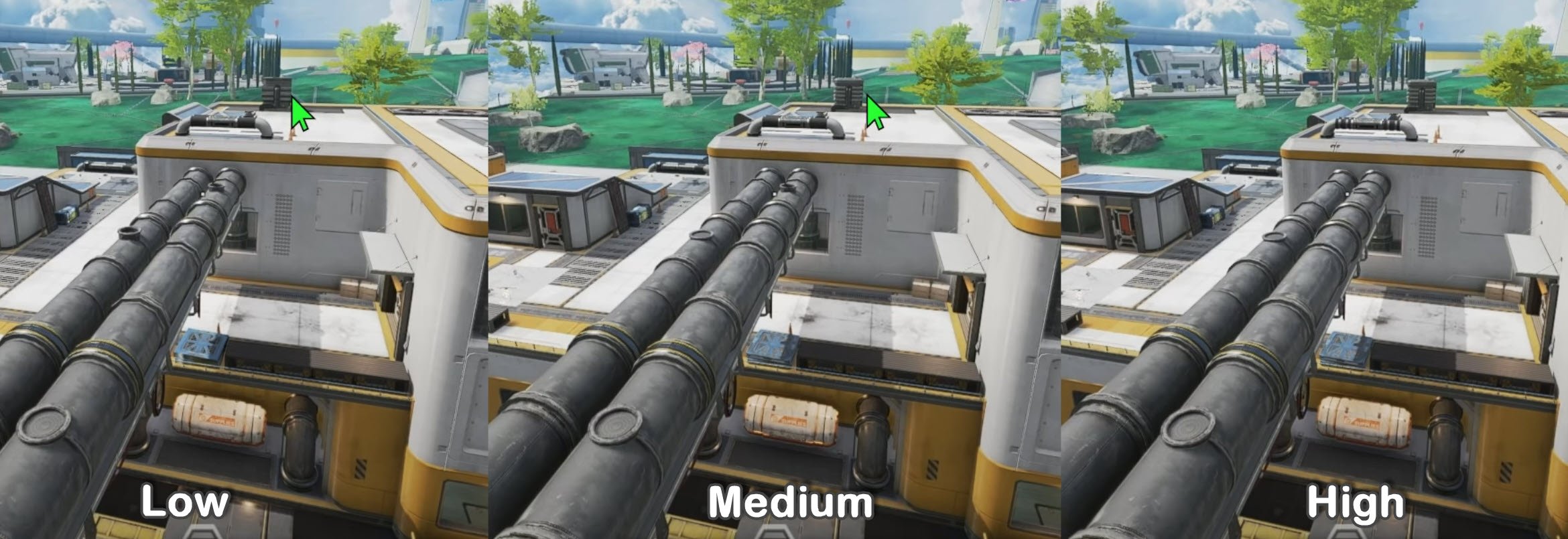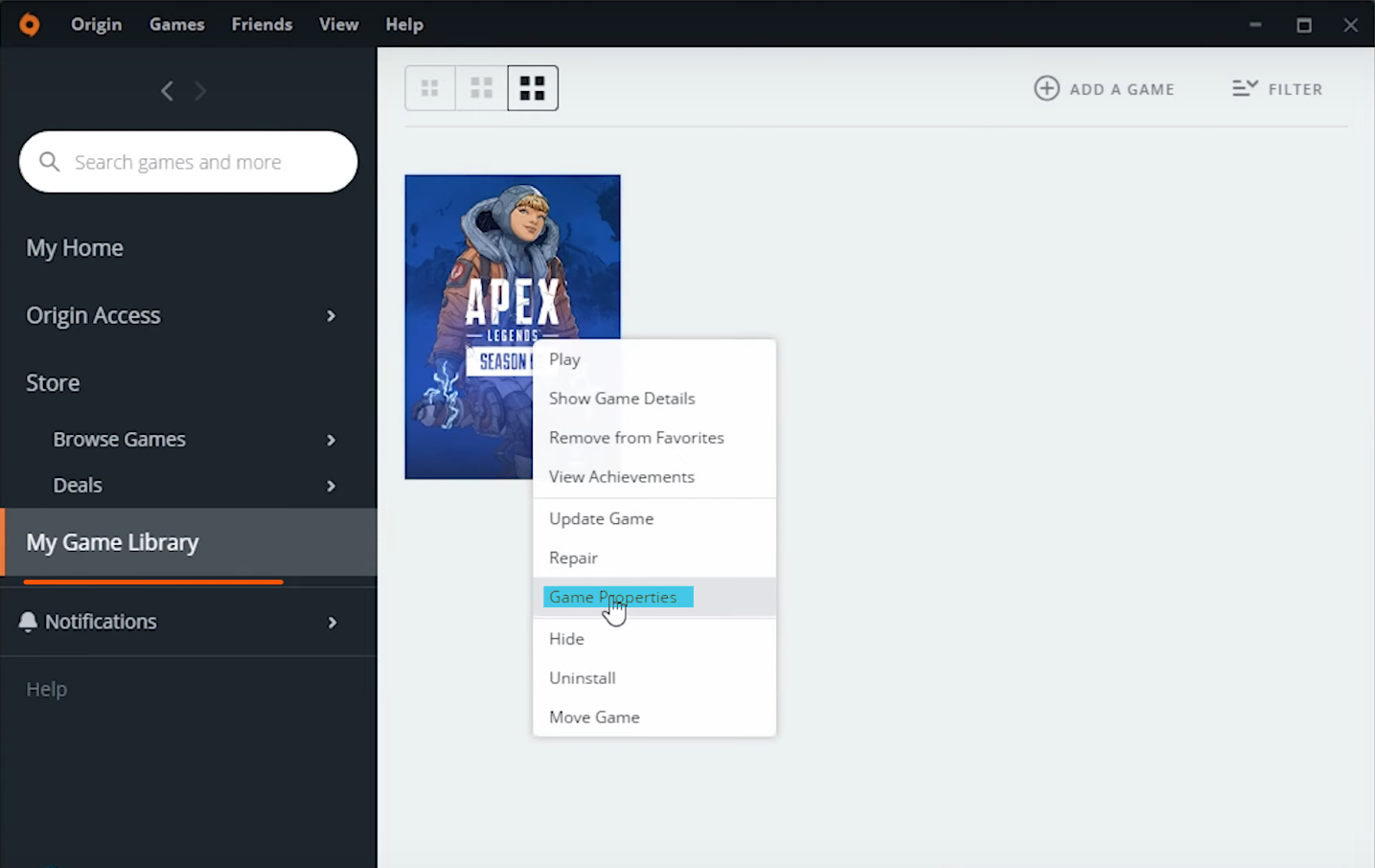Players are seeing massive FPS losses in Apex Legends and the overall performance isn’t entirely good. But, don’t worry because, in this guide, I’ll teach you some effective methods that will really take your Apex Legends FPS to the next level.
I’ve benchmarked Apex Legends on the following PC specs:
- CPU: AMD Ryzen 5 2600x
- GPU: Nvidia RTX 3050
- RAM: 16 GB
- Storage: 1TB NVMe SSD
- OS: Windows 11 Pro
To run Apex Legends on your PC, you’ll at least need an Intel i5 3570K CPU, Nvidia GTX 970, or AMD Radeon R9 290 GPU and 8 GB RAM.
The following settings are the most taxing on your in-game performance:
- Sun Shadow Coverage & Detail
- Spot Shadow Detail
- Volumetric Lighting
- Dynamic Spot Shadows
- Model Detail
- Effects Detail
I’ve had a great time running Apex Legends on my PC without any stutters or FPS drops. There were a few issues with the game at launch, but they’ve since been properly addressed and fixed by the developers. I did however face random crashes while queuing for a game, but it was a freak occurrence.
Best Apex Legends PC Settings for High FPS
I’ll guide you through the settings, and just to clarify once again. My settings are entirely aimed at those who want to have excellent frames and stable performance. Players like us always focus on getting better at the game, and we really don’t want unstable frames to hold us back.
| Setting | What to Set it To |
|---|---|
| Display Mode | Full Screen |
| Aspect Ratio | 16:9 (or Native) |
| Resolution | 1920×1080 (Highest Available or Native) |
| Brightness | Personal Preference |
| Field of View | 110 (Personal Preference, adjust as desired) |
| V-Sync | Disabled |
| Adaptive Resolution FPS Target | 0.0 |
| Anti-Aliasing | None |
| Texture Streaming Budget | None |
| Texture Filtering | Bilinear |
| Ambient Occlusion Quality | Disabled |
| Sun Shadow Coverage | Low |
| Sun Shadow Detail | Low |
| Spot Shadow Detail | Disabled |
| Volumetric Lighting | Disabled |
| Dynamic Spot Shadows | Disabled |
| Model Detail | Low |
| Effects Detail | Low (or Medium if preferred) |
| Impact Marks | Disabled |
| Ragdolls | Low |
All Graphics Settings Comparison
Here are some crucial graphics settings compared:
Windows Optimization Tips For Apex Legends
Besides configuring in-game settings for Apex Legends, I recommend applying the following optimization tips. These will help you get an additional performance boost while also making your PC snappier.
- Enable Game Mode
- Enable Ultimate Performance Power Plan
- Clear Out Temp Files & Cache
- Disable Useless Applications Running in the Background
- Use High-Performance GPU For Apex
- Set Apex Legend’s Process To High Priority In Task Manager
- Disable Fullscreen Optimizations
Tip: I also recommend that you try optimizing your GPU settings with our guides on the best Nvidia Control Panel settings or AMD Radeon’s best settings.
Bonus Tip: Use These Launch Options For Apex Legends
Like Steam, Origin also allows you to enter advanced launch options that are meant to tweak your graphics. We are going to take advantage of this feature by using certain commands, that will further optimize Apex Legends, and get us the maximum FPS. Before I force you to copy and paste the code, I’ll give you a short description of each code so you can know the benefits.
Here are the launch prompts first and their respective descriptions:
-refresh 144 -dev -preload -threads 8 -forcenovsync -fullscreen -high
- The -refresh command will ensure the game is utilizing the refresh rate value of your monitor. Make sure, you are entering the right refresh rate value. I have got an XG2401 from Viewsonic, and its refresh rate is 144.
- The -dev command as many people on forums have noticed. It actually enables the Source Engine of Apex Legends. According to many people, this command has significantly improved performance. If you don’t see any difference, try to use -console instead of -dev.
- The -preload has a remarkable function because it preloads certain game assets. This slightly improves loading times and many users have seen a significant increase in overall stability.
- -Threads code will ensure that Apex Legends is fully utilizing all the threads available. Make sure you are entering the correct number of threads available in the value. For my 4 Core Processor, there are 8 threads.
- -forcenovsync won’t be entirely necessary if you have followed our guide properly. We disabled V-sync everywhere, but in case you didn’t, forcenovsync will ensure that V-sync is always disabled.
- The -fullscreen command is more like a high priority. When enabled, you will see more consistent frames and better responsiveness. If you hate to minimize the game, simply skip this command. Likewise, if you are struggling with windowed and half-screen bugs, enable it.
Now that you know what are the functions of these launch options. Let’s learn how you can enter one.
- Go To Start > Type Origin > Open the first result.
- Now Head over to the “My Games Library” > Find Apex Legends > Right Click Game Properties.

- Now You’ll see Advanced Launch Options, and under “Command Line arguments” enter the code we mentioned above.
My Thoughts On These Best Settings
So you might be thinking, why do I set everything Low and Mostly Disabled? Firstly, you have to see how many frames you can get with all the settings I’ve mentioned in this guide.
Once you see the max frames, there is room for some tweaks. You can automatically enhance some settings like Model Detail and Effects Detail to Medium. This will benefit you with better visuals, and the balance of Frames and Graphics will be fantastic.
In FPS games like Apex Legends, you always have to get the best possible performance. If your frames are inconsistent, there is no way you can win games.
Thanks! Do share your feedback with us. ⚡
How can we make this post better? Your help would be appreciated. ✍
Outstanding Job!
tysm guys!!!!
Many powerful information that i had no idea about even tho i have decent knowledge about games and pcs, thanks!









